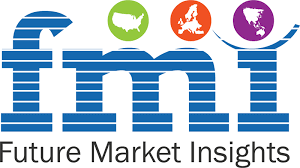
The global petroleum-fuel dyes and markers market is anticipated to reach a substantial valuation of USD 746.3 million by 2033, growing at a CAGR of 4.8%. This growth is driven by the increasing need for regulatory compliance, fuel quality monitoring, and the prevention of fuel theft and adulteration. Petroleum dyes and markers are essential for differentiating fuel grades, aiding in tax enforcement, and maintaining industry standards. Rising demand for fuel quality verification in regions with stringent regulatory frameworks, coupled with technological advancements in fuel marking, is expected to propel market growth.
The issue of fuel adulteration is a significant concern in certain regions, where unscrupulous operators blend lower-grade fuels with higher-quality ones to increase profits. Petroleum-fuel dyes and markers are employed to detect and deter such practices. By using these dyes and markers, fuel suppliers and governments can easily identify adulterated fuels, enabling appropriate action against offenders.
Government regulations play a crucial role in driving the petroleum-fuel dyes and markers market. Regulatory bodies often mandate the use of specific dyes and markers to differentiate between different fuel types, such as gasoline, diesel, and aviation fuel. These regulations are in place to ensure fuel quality, environmental protection, and tax compliance within the industry. Compliance with these regulations creates a consistent market demand for petroleum-fuel dyes and markers.
Inefficient supply chain management and distribution can lead to confusion and mishaps if different fuel types are not adequately identified. Petroleum-fuel dyes and markers facilitate clear identification of various fuel types. This prevents mix-ups and ensures the right fuel is used for specific applications, such as aviation or marine use.
Dyes and markers serve as essential tools for tracking fuel for taxation purposes. Governments may use unique dyeing programs to mark fuels meant for different tax brackets or applications. This helps in enforcing tax compliance, preventing tax evasion, and ensuring a fair contribution from the fuel industry to public revenue.
Counterfeit fuels may not meet the required quality standards and pose significant risks to consumers, vehicles, and the environment. By incorporating dyes and markers into the fuel, it becomes easier to detect counterfeit products. This enables authorities to take appropriate action against counterfeiters.
The global shift towards cleaner and sustainable energy sources, such as biofuels, presents opportunities for the petroleum-fuel dyes and markers market. As the variety of biofuel blends increases, the need for specific markers to differentiate and trace these fuels becomes crucial for regulatory compliance and accurate supply chain management.
The growth of the oil and gas industry leads to increased demand for fuel products. As the demand for fuels rises, so does the demand for fuel dyes and markers to ensure proper identification, tracking, and quality control throughout the supply chain.
With the expansion of the transportation sector, the demand for fuel increases proportionally. This growth in fuel consumption necessitates the use of dyes and markers to maintain accurate fuel identification and traceability. This enhances safety and efficiency in the transportation industry.
The adoption of nanotechnology is likely to open up growth prospects for the petroleum-fuel dyes and markers market. Nanomaterials exhibit unique properties, such as increased sensitivity and stability, enabling more accurate and long-lasting detection of markers. This can lead to better fuel traceability and improved market penetration for advanced marker solutions.
Key Takeaways from the Petroleum-Fuel Dyes and Markers Market
- The petroleum-fuel dyes and markers industry in the United Kingdom is anticipated to rise sizably, exhibiting a CAGR of 3.4% through 2033, driven by increasing demand for advanced fuel tracking technologies in compliance with the country’s stringent fuel quality regulations.
- The United States held a 25.3% share of the global petroleum-fuel dyes and markers industry in 2022, attributed to the country’s robust petroleum refining sector and the growing emphasis on enhancing fuel traceability for security and tax enforcement purposes.
- With a CAGR of 4.7% over the forecast period, India is predicted to develop rapidly in the petroleum-fuel dyes and markers industry, driven by the government’s initiatives to curb fuel adulteration and the increasing adoption of advanced fuel authentication technologies in the country’s expanding energy sector.
- In 2022, Japan had a 7.5% share of the petroleum-fuel dyes and markers industry globally, bolstered by the country’s stringent fuel quality regulations and the growing demand for high-quality fuels in its automotive and industrial sectors.
- China’s petroleum-fuel dyes and markers industry is expected to flourish speedily, registering a CAGR of 4.5% over the forecast period, fueled by the country’s massive fuel consumption, rapid industrialization, and increasing focus on fuel traceability and quality control to meet stringent environmental standards.
- Germany accounted for 7% of the global petroleum-fuel dyes and markers industry in 2022, driven by the country’s strong automotive and transportation sectors, which demand precise fuel identification and monitoring to ensure compliance with strict emissions regulations and fuel quality standards.
Unlock Comprehensive Insights by Reading the Full Report Now!
Competitive Landscape in the Petroleum-Fuel Dyes and Markers Market
Key market players are actively engaged in research and development to innovate and improve the performance and environmental friendliness of their products. They are also focusing on expanding their global presence through strategic partnerships and acquisitions to gain a competitive edge. Moreover, these companies are investing in advanced technologies to ensure compliance with regulatory standards. The aim is to meet the increasing demand for fuel authentication solutions across various industries, including automotive, aviation, and oil and gas.
Recent Developments by Key Players
In July 2022, FAST Ltd introduced exocet® Diesel Defender (xo1922bd), a liquid marker dye designed to prevent theft of United Kingdom non-rebated fuel.
Dow, a leading company specializing in fuel marking technologies, introduced a range of launder-resistant solutions branded ACCUTRACE™ in November 2022.
Key Companies Profiled
- Johnson Matthey (Tracerco)
- The Dow Chemical Company
- BASF SE
- SGS SA
- Innospec
- Marquard & Bahls
- Pylam Products Company, Inc.
- John Hogg Technical Solutions
- SBZ Corporation
- United Color Manufacturing, Inc.
- Spectronics Corporation
- Mid Continental Chemical
- Organic Dyes and Pigments
- Orient Chemical (Korea) Ltd.
About Future Market Insights (FMI)
Future Market Insights, Inc. (ESOMAR certified, recipient of the Stevie Award, and a member of the Greater New York Chamber of Commerce) offers profound insights into the driving factors that are boosting demand in the market. FMI stands as the leading global provider of market intelligence, advisory services, consulting, and events for the Packaging, Food and Beverage, Consumer Technology, Healthcare, Industrial, and Chemicals markets. With a vast team of over 400 analysts worldwide, FMI provides global, regional, and local expertise on diverse domains and industry trends across more than 110 countries. Join us as we commemorate 10 years of delivering trusted market insights. Reflecting on a decade of achievements, we continue to lead with integrity, innovation, and expertise.
Contact Us:
Future Market Insights Inc.
Christiana Corporate, 200 Continental Drive,
Suite 401, Newark, Delaware – 19713, USA
T: +1-347-918-3531
For Sales Enquiries: sales@futuremarketinsights.com
Website: https://www.futuremarketinsights.com
LinkedIn| Twitter| Blogs | YouTube

